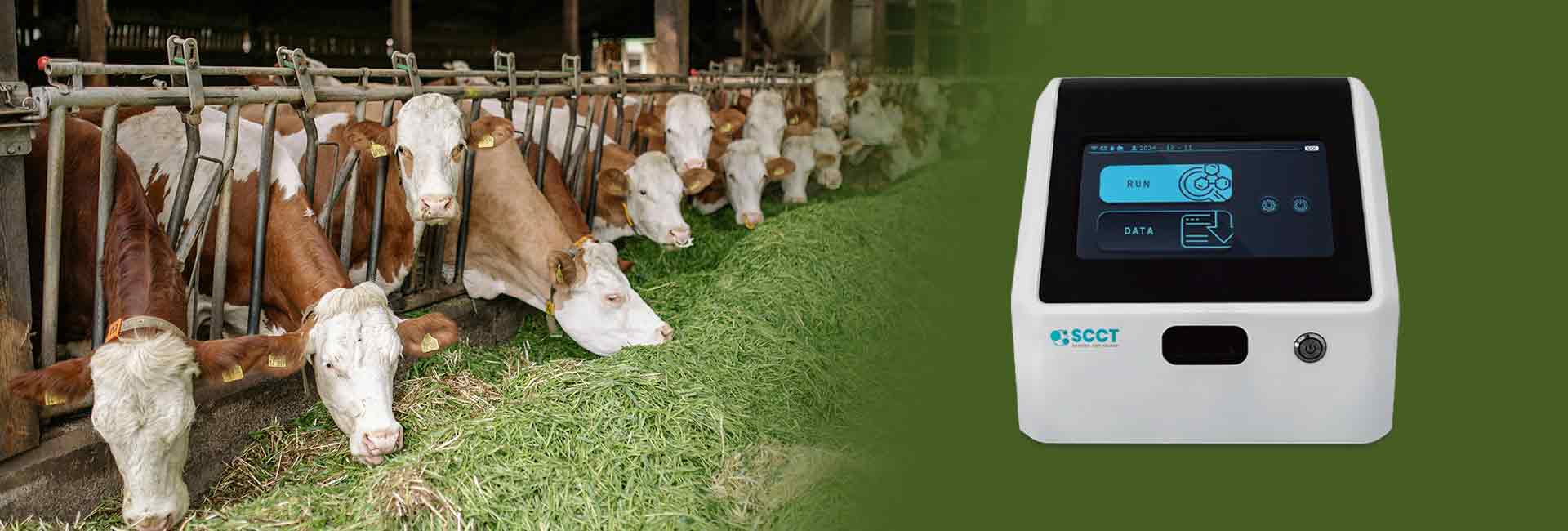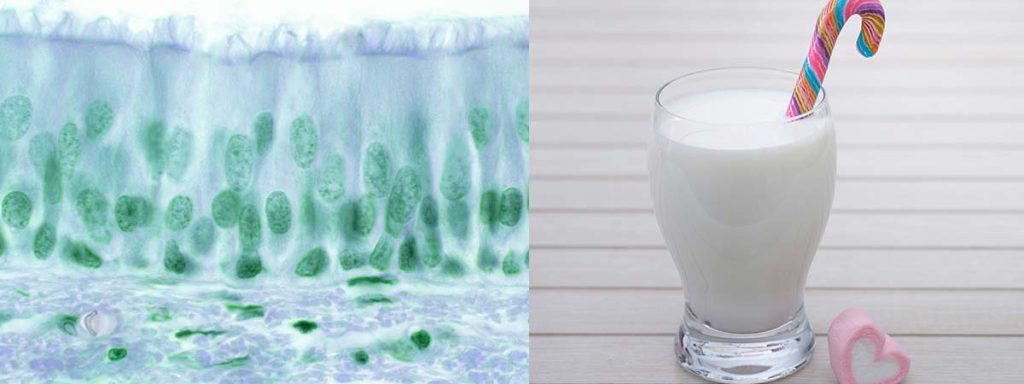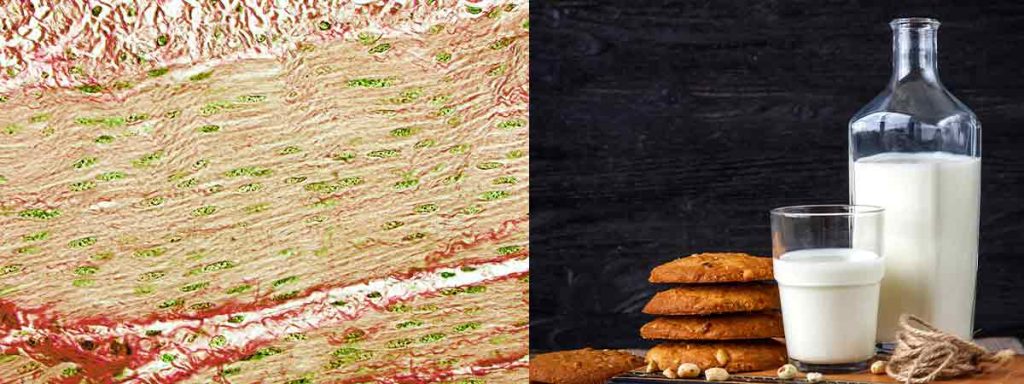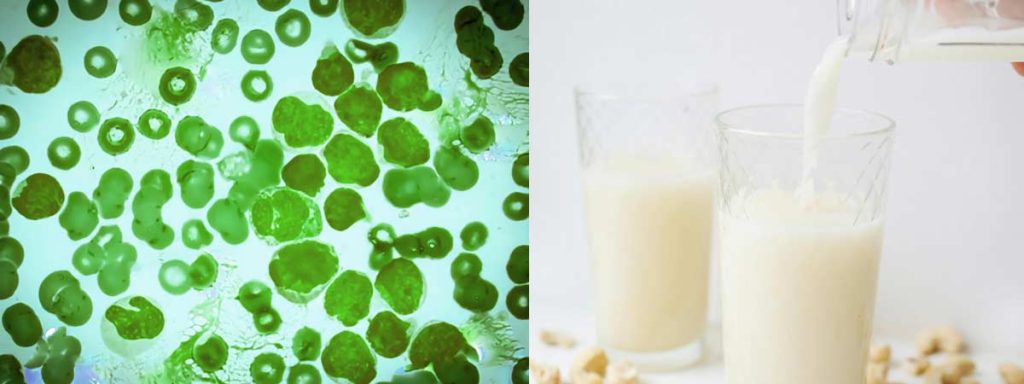

Combining genetic selection with herd management remains the most effective strategy to achieve a lower somatic cell count score in dairy production. Recent studies from regions such as the Friuli Venezia Giulia in Italy and the United States show wide variation in somatic cell count, with averages ranging from 95,000 cells/mL to 178,000 cells/mL. Lowering somatic cell scores in dairy herds improves milk quality, reduces mastitis risk, and supports better health for both milk and cattle. Farms that maintain low scc levels benefit from higher milk yield, improved milk marketability, and reduced mastitis-related losses. Use of a somatic cell count tester and genomic tools allows dairy producers to monitor scc, optimize management, and make informed decisions. A balanced approach delivers both immediate improvements in milk quality and long-term gains in dairy herd health and lactation performance.
Key Takeaways
- Lowering somatic cell count improves milk quality, reduces mastitis risk, and increases milk yield and profitability.
- Genetic selection using genomic testing helps breed cows with better udder health and lower somatic cell scores over time.
- Good herd management, including milking hygiene, mastitis prevention, and cow comfort, effectively controls somatic cell count.
- Regular use of somatic cell count tester allows early detection of mastitis and supports timely treatment to protect milk quality.
- Combining genetic strategies with strong management and clear herd goals leads to sustainable improvements in milk quality and herd health.
SCC and Milk Quality
Impact on Milk Somatic Cells
Milk quality depends heavily on the level of milk somatic cells present in dairy herds. High milk somatic cell counts signal inflammation, often due to mastitis, which directly affects milk quality. When somatic cell count rises, proteolytic enzymes increase in the milk. These enzymes break down proteins and fats, causing a decline in milk quality. As a result, cheese yield drops, and the texture and flavor of dairy products change. High milk SCC also shortens shelf life and introduces off-flavors, making milk less appealing to consumers. Research shows that milk with high somatic cell count has poor stability and altered taste profiles. Subclinical mastitis, which often goes unnoticed, can elevate milk somatic cell counts and reduce cheese yield. This effect appears in cows, sheep, and goats, confirming that somatic cell count is a universal indicator of milk quality. Dairy producers use a somatic cell count tester to monitor milk somatic cell counts and maintain high milk quality standards.
Elevated SCC and somatic cell score (SCS) are closely linked to mastitis in dairy cows.
- Cows with high milk SCC have about five times higher odds of developing mastitis than those with lower counts.
- During mastitis events, both SCS and total daily somatic cell output increase dramatically.
- Milk yield drops sharply after mastitis, and the lowest yield occurs one week after onset.
- SCS serves as the best single predictor of mastitis, but combining SCS with total somatic cell output improves detection.
- The dilution effect of milk yield on SCC means that both concentration and total output matter for mastitis management.
Financial Effects
High milk somatic cell counts create significant financial losses for dairy producers. Each increase in somatic cell count reduces milk yield, which lowers overall dairy income. The table below outlines the economic impact of high milk SCC and mastitis on dairy herds:
| Metric | Loss per Cow | Loss per 500-Cow Herd | Notes/Assumptions |
|---|---|---|---|
| Milk yield loss per 1000 cells/mL SCC increase | 1.56 lb RHA milk loss | 624 lb loss at 400,000 cells/mL SCC | Milk (lb) = 23,661 – 1.56 * SCC (1000 cells/mL) |
| Financial loss at 400,000 cells/mL SCC | N/A | ~$56,000 | Assumes $18/cwt milk price |
| Milk yield loss per 1 unit increase in SCS | 207 lb RHA milk loss | 1035 lb loss at SCS 5 | Milk (lb) = 24,151 – 207 * SCS (0-9 scale) |
| Financial loss at SCS 5 | N/A | ~$93,000 | Assumes $18/cwt milk price |
| Economic loss per clinical mastitis case | $80 per cow per year | N/A | From Sadeghi-Sefidmazgi et al., 2010 |
Dairy herds with high milk SCC face penalties and reduced marketability. Many countries enforce strict somatic cell count limits to protect milk quality. The chart below compares regulatory standards across major dairy-producing regions:
Maintaining low milk somatic cell counts helps dairy herds avoid financial penalties, improve milk quality, and support better herd health. Regular use of a somatic cell count tester allows producers to track milk somatic cell counts, respond quickly to mastitis, and protect both milk yield and quality throughout lactation.
Genetic Selection for Low Somatic Cell Score
Heritability and Genetic Progress
Genetic improvement plays a key role in reducing high somatic cell count in milk. Somatic cell scores show moderate heritability, which means that genetic selection can lead to steady progress over generations. When dairy producers select cows and bulls with lower somatic cell scores, they help future generations inherit better udder health and lower risk of mastitis. This approach supports both immediate and long-term gains in milk quality and herd health.
Somatic cell count score reflects the genetic ability of a cow to resist infections like mastitis. By focusing on genetic selection for low somatic cell scores, dairy herds can achieve lower average milk somatic cell counts. Over time, this reduces the need for treatments and lowers the risk of chronic mastitis cases. Genetic evaluation programs use both pedigree and performance data to identify animals with the best potential for low scc and high milk production. These programs help farmers make informed breeding decisions that improve both milk yield and udder health.
Note: Regular use of a somatic cell count tester helps track progress in somatic cell evaluations and supports genetic improvement by identifying cows with consistently low scc.
Genomic Testing
Genomic testing has transformed the way dairy producers select for low somatic cell count and mastitis resistance. By analyzing DNA markers linked to udder health, genomic testing provides a more accurate picture of each animal’s genetic risk for high somatic cell count score. This method goes beyond traditional pedigree-based selection by using high-density genotyping platforms and advanced models like the single-step genomic best linear unbiased predictor.
Genomic selection combines DNA data with actual milk and health records, increasing the accuracy of genetic evaluation for somatic cell scores. For example, studies show that using genomic data improves the precision of selecting cows with lower genetic risk for high scc and mastitis. This allows dairy farmers to make earlier and more reliable decisions, even for young animals that have not yet completed a lactation. Machine learning and ‘omic’ technologies, such as transcriptomics and epigenomics, further refine these predictions.
Some of the most reliable genomic markers associated with low somatic cell count and mastitis resistance include:
- Significant SNPs on chromosomes BTA 14, 15, 22, and 29.
- Candidate genes such as DNASE1L3, SLC36A4, ARMC1, PDE7A, MMP13, and CD44.
- Additional genes like HERC3, LUZP2, AKAP8, MEGF10, DYRK2, and β-defensin clusters.
- Genotype combinations such as SPP1(AA), CXCR1(CC), NOD2(CA), and LF(GA) show high resistance to occult mastitis.
A KASP genotyping kit now enables accurate identification of mastitis-resistant cows, supporting more effective breeding programs. By using genomic testing, dairy herds can lower milk somatic cell counts, reduce mastitis cases, and improve overall milk quality.
Balancing SCC and Milk Yield
Dairy producers must balance the goal of low somatic cell count score with the need for high milk production. In the past, breeding focused mainly on increasing milk yield, sometimes at the expense of udder health. Today, modern selection indices include somatic cell scores, fertility, and health traits to ensure sustainable progress.
Research shows that selecting for low scc does not necessarily reduce milk yield or farm efficiency. In fact, higher somatic cell count leads to lower technical efficiency and profit losses. By including somatic cell evaluations in breeding goals, dairy herds can improve both milk yield and animal health. Balanced breeding strategies use genomic testing and comprehensive indices, such as the Dairy Wellness Profit Index, to integrate production, health, and longevity traits.
| Factor | Effect on Technical Efficiency | Effect on Profitability | Notes on Milk Yield/Trade-off |
|---|---|---|---|
| Higher Somatic Cell Count | Decreases efficiency | Profit losses | Selecting for low SCC improves both |
| Genetic Selection | Increases productivity | Improves profits | Must consider SCC and reproduction |
| Balanced Breeding Indices | Maintains milk yield | Reduces mastitis cases | Supports herd longevity |
Successful breeding strategies include:
- Using genomic testing to identify cows with low genetic risk for high somatic cell count and mastitis.
- Applying selection indices that balance milk production, health, and fertility.
- Monitoring individual cow scc with tools like the somatic cell count test kit.
- Preventing new mastitis infections during the dry period and lactation.
- Reducing herd turnover and improving reproductive performance by maintaining low milk scc.
Herds that follow these strategies see fewer mastitis cases, higher lifetime milk production, and longer productive lifespans. By balancing genetic selection for low somatic cell scores with milk yield, dairy producers achieve sustainable improvements in both milk quality and profitability.
Herd Management to Control SCC
Milking Hygiene

Milking hygiene forms the foundation of effective dairy management practices to control somatic cell count and improve milk quality. Regular cleaning of milking lines prevents contamination and reduces the risk of mastitis. Dairy workers should wash teats with water before milking to maintain teat cleanliness. Strip cup tests and California mastitis tests help detect infections early, allowing for prompt intervention. These simple steps lower the risk of both clinical mastitis and subclinical mastitis, which can silently increase somatic cell count in milk.
Post-milking teat disinfection stands out as a critical practice. Applying germicidal dips, such as iodine or chlorhexidine, after each milking session significantly reduces the incidence of new intramammary infections and lowers bulk tank SCC. While pre-milking teat disinfection decreases bacterial contamination on the skin, it does not lead to meaningful reductions in SCC or infection rates, especially in herds with already low SCC. Dairy producers should focus on post-milking disinfection as a proven method to protect udder health and maintain low somatic cell count in milk.
Tip: Improving farmer knowledge, providing technical assistance, and adopting new technologies help sustain high hygiene standards as regulatory requirements for SCC become stricter.
Mastitis Prevention
Mastitis prevention protocols play a vital role in reducing SCC and improving milk quality in dairy herds. Proper milking techniques prevent teat injuries and limit the spread of pathogens between cows. Using individual disposable towels and trimming udder hair further reduces contamination. Routine application of germicidal teat dips after milking, such as iodine or quaternary ammonium compounds, helps eliminate bacteria that cause mastitis.
Dairy management practices should include strict adherence to antibiotic dry cow therapy instructions. Treating acute clinical mastitis cases promptly limits the severity of infections and reduces the duration of elevated SCC. Culling cows with chronic infections removes persistent sources of mastitis pathogens from the herd. Segregating infected cows and using separate milking equipment prevent the spread of disease within the dairy.
- Implement proper milking techniques to avoid teat injury and prevent cow-to-cow transmission.
- Routinely apply germicidal teat dips after milking.
- Use antibiotic dry cow therapy as directed.
- Treat acute clinical mastitis cases without delay.
- Cull cows with chronic infections.
- Segregate infected cows and use separate equipment.
Early detection and treatment of mastitis are essential for controlling SCC trends. Identifying intramammary infections early allows for timely intervention, which limits disease severity and prevents visible clinical signs. Elevated SCC signals mastitis, and prolonged high SCC indicates chronic inflammation that can damage mammary tissue. Early treatment reduces the duration and magnitude of SCC elevation, minimizing milk yield losses and improving milk quality. Patterns of SCC vary by lactation stage and pathogen type, so regular monitoring is crucial.
Note: A reasonable goal for dairy herds is to keep over 80% of cows with SCC linear scores of 3 or less and bulk tank SCC below 200,000 cells/mL.
Environment and Cow Comfort
Environmental factors strongly influence somatic cell count and milk quality in dairy cows. High temperatures and humidity increase stress, reduce feed intake, and promote bacterial growth, leading to higher SCC, especially during summer and spring. Seasonality affects SCC, with the highest values in hot seasons and the lowest shortly after calving in winter. Pathogens also play a major role. Contagious pathogens like Staphylococcus aureus spread during milking, while environmental pathogens such as Streptococcus uberis originate from bedding, manure, and soil.
| Environmental Factors Affecting SCC | Description |
|---|---|
| Temperature and Humidity | High temperatures and humidity increase stress on cows, reduce feed intake, and promote bacterial growth, leading to higher SCC, especially in hot-humid seasons like summer and spring. SCC tends to be highest during these seasons and lowest shortly after calving in winter. |
| Seasonality | SCC varies seasonally, with higher values in summer and spring, and lower in winter. Milk quality and coagulation properties worsen in summer. |
| Pathogens | Contagious pathogens (e.g., Staphylococcus aureus, Streptococcus agalactiae) spread during milking, while environmental pathogens (e.g., Streptococcus uberis, coliforms) originate from bedding, manure, and soil. Different pathogens cause varying SCC levels, with S. aureus and S. agalactiae linked to higher SCC. |
Optimizing cow comfort through improved housing, bedding, nutrition, and management practices can effectively reduce SCC and enhance milk quality. Free stall systems, sand bedding, and regular cleaning of calving pens improve udder health. Nutritional supplementation with minerals and micronutrients supports immunity and lowers SCC. Monitoring dry cow udders, managing udder hair, and frequent testing with tools like the California Mastitis Test help detect and control infections. Teat disinfectants and blanket dry cow therapy also contribute to better udder health and lower bulk milk SCC.
Using a Somatic Cell Count Tester
Routine monitoring with a somatic cell count tester enables dairy producers to track SCC trends and respond quickly to mastitis outbreaks. On-farm tests, such as the California Mastitis Test and SomaLite ATP-based test, provide rapid, cow-side estimation of SCC. These tools help identify affected quarters for targeted further testing and intervention. While laboratory instruments offer high accuracy and precision, they are not practical for routine on-farm use due to complexity and cost.
| Testing Method | Accuracy and Precision | Complexity and Cost | Suitability for On-Farm Use |
|---|---|---|---|
| Laboratory Instruments | High accuracy and precision; calibrated against microscopic counts | Complex and expensive | Not practical for routine on-farm use |
| Fossomatic, Coulter, Bentley Counters | Accurate, rapid, precise measurement | Complex instrumentation | Used mainly in dairy testing labs |
| California Mastitis Test (CMT) | Provides rapid, cow-side estimation; less precise than lab methods | Simple, low cost | Suitable for quick on-farm screening |
| Wisconsin Mastitis Test (WMT) | Similar to CMT but slightly more complex; rapid milk quality test | Moderate complexity | Used at dairies for rapid screening |
| SomaLite ATP-based Test | Good correlation with microscopic SCC at higher counts (≥300,000 cells/ml) | Rapid, single service test | Useful for on-farm rapid SCC estimation |
Monthly SCC measurement remains a sensitive and easy method to identify subclinical mastitis. Using a somatic cell count tester on the farm reduces costs by focusing diagnostic efforts on cows most at risk. Regular monitoring supports targeted management practices, allowing dairy producers to maintain low SCC, improve milk yield, and protect herd health throughout lactation.
Dairy herds that combine genetic selection, best management practices, and regular use of a somatic cell count tester achieve sustainable reductions in SCC and better milk quality.
Synergy: Genetics and Management
Case Studies
Dairy farms that combine genetic selection with strong management practices see the greatest improvements in milk quality and udder health. One study on Holstein Friesian cows used genetic selection for favorable haplotypes on Bos taurus autosome 18, which is linked to somatic cell count and mastitis resistance. These cows received careful veterinary care, weekly milk sampling, and close monitoring during lactation. When exposed to mastitis pathogens like Escherichia coli and Staphylococcus aureus, cows with the favorable genetic profile showed lower somatic cell counts and less bacterial shedding. Their immune responses also differed, leading to better milk quality and fewer mastitis cases.
A large survey of Swiss dairy farms found that both genetic selection and management practices, such as dry cow udder controls and clean bedding at calving, reduced the proportion of milk samples with high somatic cell count. In free-stall systems, hand and arm cleaning after calving and careful bull selection improved milk quality. Farms that used both approaches achieved measurable reductions in somatic cell count and mastitis rates, especially when using a somatic cell count tester for regular monitoring.
| Evidence Aspect | Description |
|---|---|
| Genetic Selection Impact | Selection tools improve udder health, but progress is slow without management. |
| Herd Management Role | Health data recording and management software support genetic evaluations. |
| Combined Strategy | Both strategies together reduce scc and mastitis more effectively. |
| Geographic Differences | Scandinavian countries show greater progress with integrated approaches. |
Setting Herd Goals
Setting clear herd goals helps dairy producers maintain low somatic cell count and high milk quality throughout lactation. High-performing dairy herds often target a bulk milk somatic cell count below 200,000 cells/mL and aim for at least 70% of cows with somatic cell counts under 200,000 cells/mL before and after the dry period. Only about 3% of cows should remain chronically infected. Regular use of a somatic cell count tester supports these goals by identifying cows at risk for mastitis and tracking progress.
| Benchmark/Indicator | Value/Threshold | Description/Context |
|---|---|---|
| Threshold for Intramammary Infection (IMI) | 200,000 cells/mL | Used to define infection status in individual cows and set target benchmarks. |
| Median herd annual mean SCC | 262,000 cells/mL | Typical SCC level in high-performing herds. |
| Proportion of healthy cows over dry period | 0.70 | Cows with SCC < 200,000 cells/mL before dry-off and after calving. |
| Proportion of chronically infected cows | 0.03 | Cows with SCC ≥ 200,000 cells/mL before dry-off and after calving. |
| Upper limit for Bulk Milk Somatic Cell Count | 400,000 cells/mL | Exceeding this results in penalties or shipment stop. |
Dairy producers who set and monitor these benchmarks, while combining genetic selection and management, achieve better milk quality, lower mastitis rates, and improved herd health during every lactation.

Conclusion
Combining genetic selection with strong herd management gives dairy producers the best chance to lower somatic cell count score and improve milk quality. Frequent monitoring, such as using a somatic cell count tester or automated systems, helps detect mastitis early and track somatic trends during lactation. Decision support tools and routine milk data from cooperatives support continuous improvement in quality. Setting clear goals and evaluating progress ensures that every dairy herd can maintain high milk quality, reduce mastitis, and protect milk yield throughout each lactation.
FAQ
What Is the Main Cause of High Somatic Cell Count in Milk?
Bacteria that cause mastitis often lead to high somatic cell count in milk. Poor milking hygiene, improper cow comfort, and environmental stress increase the risk. Dairy herds that monitor with a somatic cell count tester can quickly identify problems and protect milk quality during lactation.
How Does Genetic Selection Help Lower SCC in Dairy Herds?
Genetic selection targets cows with lower somatic cell scores and better resistance to mastitis. Dairy producers use genomic testing to identify these cows. Over several lactation cycles, herds show lower milk somatic cell counts and improved udder health.
Why Should Dairy Farms Use a Somatic Cell Count Tester Regularly?
A somatic cell count tester gives fast results for milk quality. Dairy managers can spot mastitis early and take action before problems spread. Regular testing supports better herd health, higher milk yield, and fewer losses during lactation.
Can Low SCC Affect Milk Yield in Dairy Cows?
Low somatic cell counts usually mean healthier cows and better milk yield. High SCC often signals mastitis, which lowers production. Dairy herds that balance genetic selection and management keep milk output high throughout lactation.
What Are the Best Practices for Preventing Mastitis in Dairy Cows?
Dairy farms should focus on milking hygiene, prompt mastitis treatment, and cow comfort. Clean bedding, regular use of a somatic cell count tester, and proper dry cow management help reduce mastitis cases. These steps protect milk quality and support healthy lactation.
